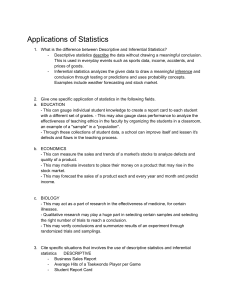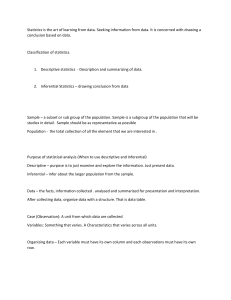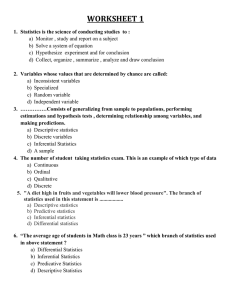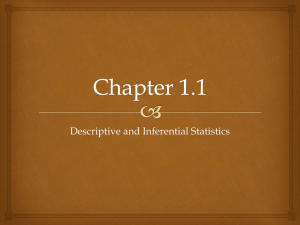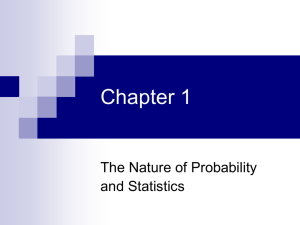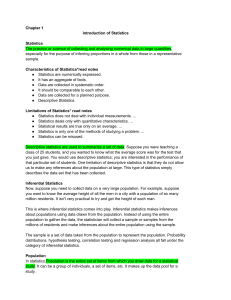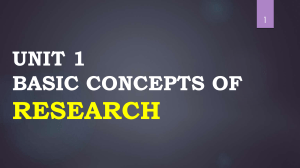Applications of Statistics: Descriptive & Inferential
advertisement
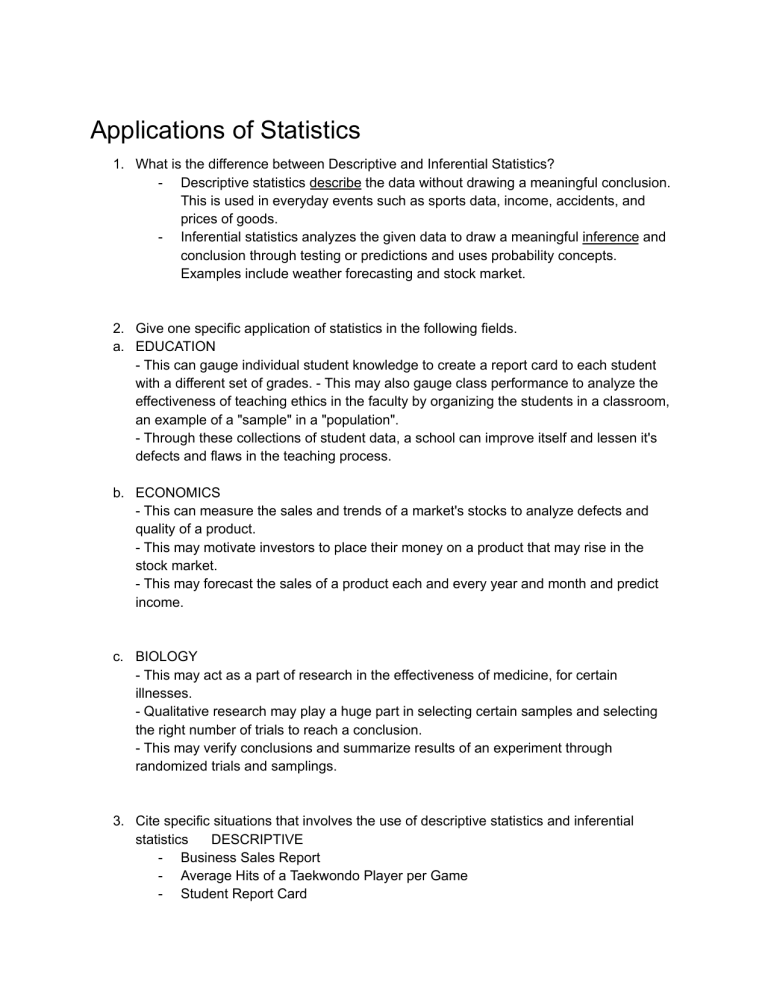
Applications of Statistics 1. What is the difference between Descriptive and Inferential Statistics? - Descriptive statistics describe the data without drawing a meaningful conclusion. This is used in everyday events such as sports data, income, accidents, and prices of goods. - Inferential statistics analyzes the given data to draw a meaningful inference and conclusion through testing or predictions and uses probability concepts. Examples include weather forecasting and stock market. 2. Give one specific application of statistics in the following fields. a. EDUCATION - This can gauge individual student knowledge to create a report card to each student with a different set of grades. - This may also gauge class performance to analyze the effectiveness of teaching ethics in the faculty by organizing the students in a classroom, an example of a "sample" in a "population". - Through these collections of student data, a school can improve itself and lessen it's defects and flaws in the teaching process. b. ECONOMICS - This can measure the sales and trends of a market's stocks to analyze defects and quality of a product. - This may motivate investors to place their money on a product that may rise in the stock market. - This may forecast the sales of a product each and every year and month and predict income. c. BIOLOGY - This may act as a part of research in the effectiveness of medicine, for certain illnesses. - Qualitative research may play a huge part in selecting certain samples and selecting the right number of trials to reach a conclusion. - This may verify conclusions and summarize results of an experiment through randomized trials and samplings. 3. Cite specific situations that involves the use of descriptive statistics and inferential statistics DESCRIPTIVE - Business Sales Report - Average Hits of a Taekwondo Player per Game - Student Report Card - INFERENTIAL Weather 2 weeks from now Chance of rain tomorrow 4. 5. Discuss the advantages and disadvantages of the following methods: ● Interview Method Advantage: - It may be a good way to extract information to those who have had a certain experience. - It may conduct detailed evaluations from subjects Disadvantage: - Different people may mean different answers. - It may group people into stereotypes ● Questionnaire Method Advantage: - It may be printed, so it may extract information from more people Disadvantage: - Sometimes the respondents would not like to answer - May not extract detailed data from people 6. What advantages does each of the following data have? - Tabular > More accurate since it's in a list form, data is straightforward - Graphical > Graphics look more appealing to the eye, helps understand everything better from afar such as in a team meeting
